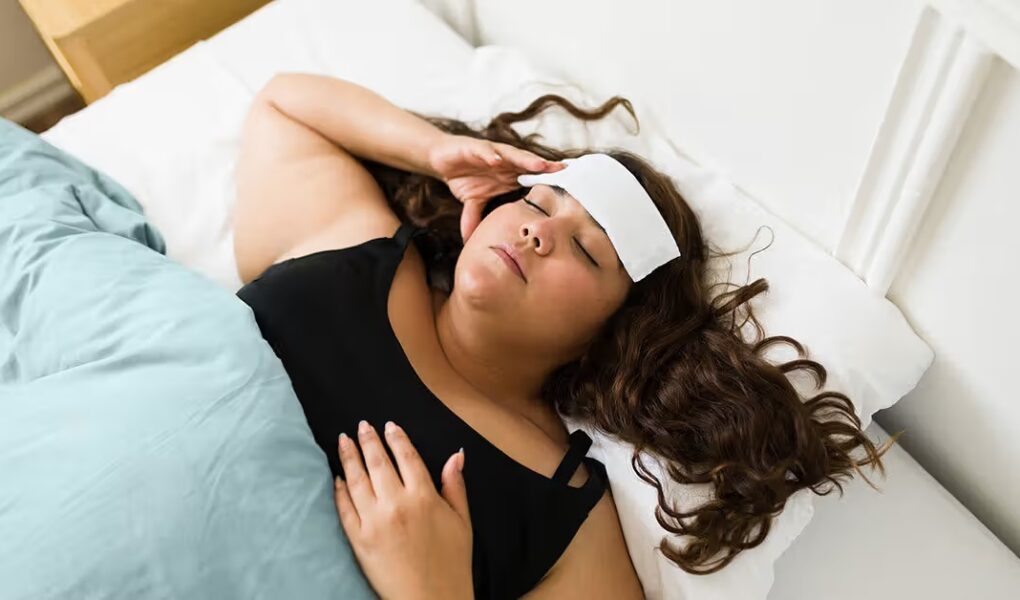Key Takeaways:
- Millions of people suffer from migraines, which are characterized by severe headaches, sensitivity to light and sound, and nausea.
- Migraines can be caused by a combination of genetic and environmental factors, and various triggers can initiate an attack.
- Migraines can have different types, each with its own unique characteristics and symptoms.
- Migraines can manifest in uncommon ways, including cognitive difficulties, mood changes, and gastrointestinal disturbances.
- Natural remedies like essential oils, herbal remedies, and acupuncture can provide relief from migraines.
- Lifestyle changes such as dietary modifications, stress management, and regular exercise can contribute to lasting relief.
- Alternative therapies like mindfulness meditation, chiropractic care, and biofeedback can also help with migraine relief.
Understanding Migraines: Unraveling the Mystery Behind the Pain
Millions of people around the world suffer from migraines, a complex neurological condition characterized by severe and often debilitating headaches. Migraines go beyond a typical headache, causing intense throbbing pain, sensitivity to light and sound, and nausea. Understanding the underlying science and triggers of migraines is crucial for finding effective relief.
The Science Behind Migraines and Their Triggers
Migraines are believed to be caused by a combination of genetic and environmental factors. Various triggers can initiate a migraine attack, including hormonal changes, certain foods, stress, lack of sleep, and sensory stimuli. The exact mechanisms behind migraines are still not fully understood, but research suggests that alterations in brain chemicals, blood vessels, and nerve pathways play a role.
Exploring the Different Types of Migraines
Migraines can be categorized into several types, including migraines without aura, migraines with aura, hemiplegic migraines, vestibular migraines, and chronic migraines. Each type has its own unique characteristics and may be accompanied by specific symptoms, such as visual disturbances, weakness or numbness on one side of the body, and dizziness.
Uncommon Migraine Symptoms You Need to Know About
In addition to the typical symptoms, migraines can manifest in less common ways that many people may not associate with the condition. These symptoms include cognitive difficulties, mood changes, gastrointestinal disturbances, and even cutaneous allodynia, a condition where the skin becomes hypersensitive to touch. Recognizing these less talked-about symptoms is important for accurate diagnosis and treatment.
Natural Remedies for Migraine Relief: Tried and Tested
When it comes to finding relief from migraines, many individuals prefer natural remedies over pharmaceutical options due to concerns about side effects and long-term use. Fortunately, several natural remedies have shown promise in alleviating migraine pain and reducing the frequency of attacks.
Discovering the Power of Essential Oils in Alleviating Migraine Pain
Essential oils, derived from plants have been used for centuries for their medicinal properties. Certain oils, such as lavender, peppermint, and eucalyptus, have been found to have analgesic and anti-inflammatory effects that can help ease migraine symptoms. Whether used in aromatherapy, applied topically, or ingested, essential oils offer a natural migraine relief effectively.
Exploring Herbal Remedies: Nature’s Bounty for Migraine Sufferers
Herbal remedies have long been used in traditional medicine systems to treat various ailments, including migraines. Feverfew, butterbur, and ginger are among the herbal supplements that have shown promise in reducing both the severity and frequency of migraines. However, it’s important to note that not all herbal remedies are backed by scientific evidence, so consultation with a healthcare professional is advised before starting any herbal regimen.
The Healing Power of Acupuncture: Ancient Technique for Modern Relief
Acupuncture, a traditional Chinese medicine practice, involves the insertion of thin needles into specific points on the body. This ancient technique has been increasingly recognized as a potential treatment for migraines. Studies have shown that acupuncture can help reduce the intensity and frequency of migraines, possibly by stimulating the body’s natural pain-relieving mechanisms and promoting relaxation.
Lifestyle Changes for Lasting Migraine Relief
In addition to natural remedies, making certain lifestyle changes can also contribute to long-lasting relief from migraines. These changes may involve dietary modifications, stress management techniques, and regular physical activity.
The Impact of Diet and Nutrition on Migraine Frequency and Severity
What we eat and drink can have a significant impact on our overall health, including migraine frequency and severity. Certain foods, such as caffeine, alcohol, processed meats, and aged cheeses, have been identified as common triggers for migraines. On the other hand, maintaining a well-balanced diet rich in fruits, vegetables, whole grains, and omega-3 fatty acids may help reduce the risk of migraines.
Stress Management Techniques: Finding Inner Calm Amidst the Storm
Stress is a well-known trigger for migraines, and finding effective ways to manage stress can be crucial for preventing and reducing migraine attacks. Techniques such as mindfulness meditation, deep breathing exercises, yoga, and progressive muscle relaxation have been shown to help reduce stress levels and promote relaxation, potentially leading to fewer migraines.
How Regular Exercise and Physical Activity Can Help Prevent Migraines
Engaging in regular physical activity is not only beneficial for overall health but can also play a role in preventing migraines. Exercise releases endorphins, natural painkillers, and mood elevators, which can help reduce the intensity and frequency of migraines. Additionally, maintaining a consistent exercise routine can contribute to improved sleep quality, stress reduction, and weight management, all of which have been linked to a lower risk of migraines.
Alternative Therapies for Migraine Relief
In addition to natural remedies and lifestyle changes, several alternative therapies have gained popularity as potential treatments for migraines. These therapies focus on harnessing the power of the mind-body connection to provide relief from migraine pain.
Mindfulness and Meditation: Training Your Mind to Tame the Migraines
Mindfulness and meditation practices involve training the mind to focus on the present moment without judgment. Research has shown that these practices can help reduce the intensity and duration of migraines, as well as improve overall psychological well-being. By cultivating a mindful and non-reactive mindset, individuals may be able to better manage their migraines and cope with the associated pain.
Chiropractic Care: Straightening Out Migraines from the Inside Out
Chiropractic care, a form of alternative medicine that involves manual manipulation of the spine and other joints, has been suggested as a potential treatment for migraines. By aligning the spine and improving overall musculoskeletal function, chiropractic adjustments may help reduce the frequency and severity of migraines. However, further research is needed to fully understand the effectiveness and mechanisms of chiropractic care in migraine management.
Exploring Biofeedback: Harnessing the Power of Your Mind
Biofeedback is a technique that enables individuals to monitor and gain control over certain physiological processes, such as heart rate and muscle tension. By learning to regulate these processes, individuals may be able to reduce the frequency and severity of migraines. Biofeedback has been shown to be particularly effective for migraineurs who experience symptoms related to muscle tension and stress.
Overall, finding relief from migraines requires a comprehensive approach that addresses the underlying triggers and incorporates natural remedies, lifestyle changes, and alternative therapies. While there’s no one-size-fits-all solution, exploring these different avenues can help individuals find effective and long-lasting relief from the debilitating pain of migraines.
FAQ
Question: What are the different types of migraines?
Migraines can be categorized into several types, including migraines without aura, migraines with aura, hemiplegic migraines, vestibular migraines, and chronic migraines. Each type has its own unique characteristics and may be accompanied by specific symptoms, such as visual disturbances, weakness or numbness on one side of the body, and dizziness.
Question: What are some uncommon symptoms of migraines?
In addition to the typical symptoms, migraines can manifest in less common ways that many people may not associate with the condition. These symptoms include cognitive difficulties, mood changes, gastrointestinal disturbances, and even cutaneous allodynia, a condition where the skin becomes hypersensitive to touch.
Question: Can essential oils provide relief from migraines?
Essential oils, such as lavender, peppermint, and eucalyptus, have been found to have analgesic and anti-inflammatory effects that can help ease migraine symptoms. Whether used in aromatherapy, applied topically, or ingested, essential oils offer a natural and potentially effective option for migraine relief.
Question: Are there any herbal remedies that can help with migraines?
Herbal remedies, such as feverfew, butterbur, and ginger, have shown promise in reducing both the severity and frequency of migraines. However, it’s important to note that not all herbal remedies are backed by scientific evidence, so consultation with a healthcare professional is advised before starting any herbal regimen.
Question: Can acupuncture help with migraines?
Acupuncture has been increasingly recognized as a potential treatment for migraines. Studies have shown that acupuncture can help reduce the intensity and frequency of migraines, possibly by stimulating the body’s natural pain-relieving mechanisms and promoting relaxation.
Question: How can lifestyle changes contribute to migraine relief?
Making certain lifestyle changes, such as dietary modifications, stress management techniques, and regular physical activity, can contribute to long-lasting relief from migraines. These changes may involve avoiding trigger foods, practicing stress reduction techniques, and engaging in regular exercise.
Question: Can mindfulness and meditation help with migraines?
Mindfulness and meditation practices have been shown to help reduce the intensity and duration of migraines, as well as improve overall psychological well-being. By cultivating a mindful and non-reactive mindset, individuals may be able to better manage their migraines and cope with the associated pain.
Question: Does chiropractic care have any benefits for migraines?
Chiropractic care, which involves manual manipulation of the spine and other joints, has been suggested as a potential treatment for migraines. By aligning the spine and improving overall musculoskeletal function, chiropractic adjustments may help reduce the frequency and severity of migraines. However, further research is needed to fully understand the effectiveness and mechanisms of chiropractic care in migraine management.
Useful Resources:
- The Migraine Trust
- Healthline: Top Ten Natural Remedies for Migraines
- Mayo Clinic: Migraine Headache
- Harvard Health: Mindfulness Meditation
- National Center for Complementary and Integrative Health: Acupuncture
- Lifestyle Factors and Migraines: An Overview
- American Association of Naturopathic Physicians: Natural Approaches to Migraine Treatment
- Spine-Health: Exercise and Migraine Prevention




